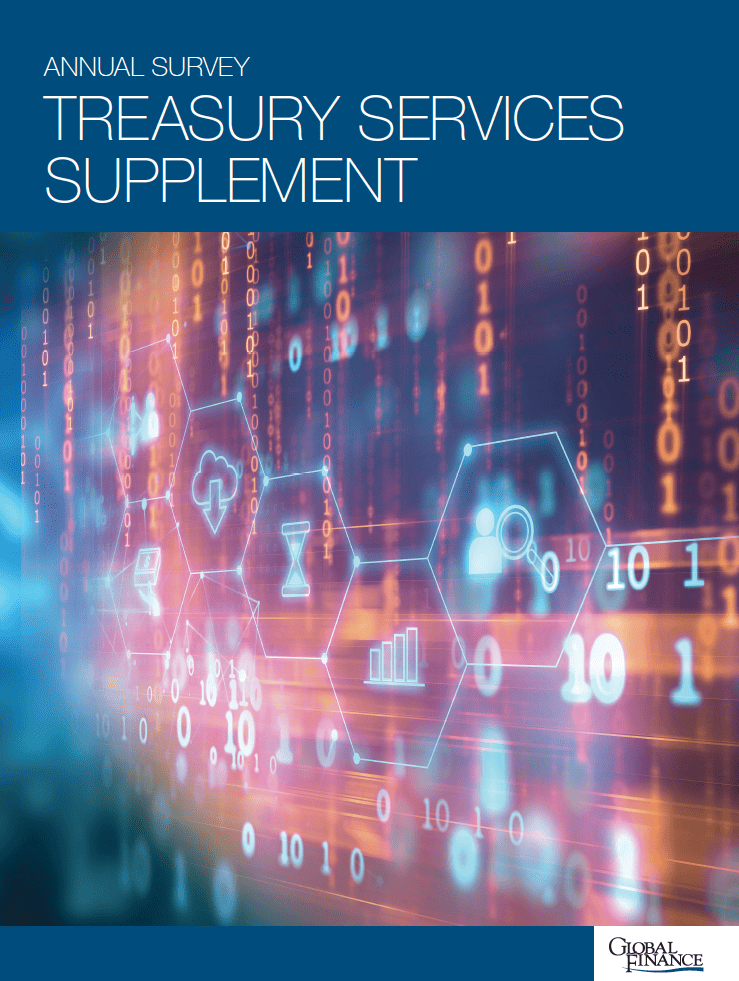From AI to robotics to virtual desktop assistants, a host of new technologies promise to make the treasurer’s life easier.

Click Here To View Full Supplement
Technologists and soothsayers often wax lyrical about blockchain. Not so corporate treasurers, who are by nature risk averse. After all, their job is to mitigate risk, so jumping on the latest technological bandwagon is not something they are typically inclined to do. Yet recently, a finance professional casually mentioned—during a conversation about intelligent automation in treasury—that blockchain could potentially have benefits in the repo market. The very casualness of the remark indicated a sea change in perspective has taken place.
Most companies are heavily invested in their enterprise resource planning (ERP) systems, software that is meant to handle everything from HR, general ledger, payables and receivables, through to sales, financials and treasury management. You name it, ERP systems do it. In reality, however, these monolithic systems do some things well and others not so well. Generally speaking, ERP systems do not operate at the capacity treasurers would like; but having invested so much money in them, scrapping them to implement new, smarter technologies from the ground up is not an option for most Fortune 500 or FTSE 100 companies.
Suffice it to say, other than the advent of cloud computing and more-sophisticated trading systems, the technology that treasurers rely on has changed relatively little in decades. Newer technologies such as blockchain and machine learning promise a lot: greater transparency, higher levels of automation, better data insights and actionable intelligence that could help treasurers better predict business outcomes and forecast future cash and liquidity needs—basically, a treasurer’s holy grail. They almost sound too good to be true.
If treasurers are to adopt blockchain, robotic process automation or artificial intelligence in any meaningful way, then these technologies will have to be integrated within the ERP, banking and treasury-management software already in use, with functionality that can be switched on and off as needed. Treasurers must be able to readily access the technology via third-party application programming interfaces (APIs), which are abundant in a world of open banking. Now all that needs to happen is for banks to embrace open APIs so that third parties can more readily access customer-account data to offer new and more-innovative services to companies.
This year’s supplement also offers up our sixth annual ranking of the world’s most cash-rich companies. What do they do with all that money? Most are storing it away for a rainy day or for acquisitions. There are fewer high-yielding investment options for treasurers today, and parking the money in short-term overnight deposits is not so attractive under ultralow interest rates. Reforms have also changed how money market funds operate. Not all of this cash may be easily transferable across the business, depending on local market regulations and foreign exchange restrictions.
Treasurers still have their job cut out for them trying to manage the known risks. What’s more, they are now preparing for that day, likely to come, when they will have to go an extra mile to source emergency liquidity. That’s one thing, treasurers note, that robots aren’t able to do very well—not yet, anyway.



